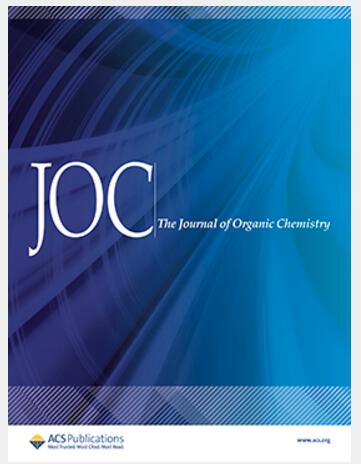The Importance of Atomic Charges for Predicting Site-Selective Ir-, Ru-, and Rh-Catalyzed C–H Borylations
IF 3.3
2区 化学
Q1 CHEMISTRY, ORGANIC
引用次数: 0
Abstract
A supervised machine learning model has been developed that allows for the prediction of site selectivity in late-stage C–H borylations. Model development was accomplished using literature data for the site-selective (≥95%) C–H borylation of 189 unique arene, heteroarene, and aliphatic substrates that feature a total of 971 possible sp2 or sp3 C–H borylation sites. The reported experimental data was supplemented with additional chemoinformatic descriptors, computed atomic charges at the C–H borylation sites, and data from parameterization of catalytically active tris-boryl complexes resulting from the combination of seven different Ir-, Ru-, and Rh-based precatalysts with eight different ligands. Of the over 1600 parameters investigated, the computed atomic charges (e.g., Hirshfeld, ChelpG, and Mulliken charges) on the hydrogen and carbon atoms at the site of borylation were identified as the most important features that allow for the successful prediction of whether a particular C–H bond will undergo a site-selective borylation. The overall accuracy of the developed model was 88.9% ± 2.5% with precision, recall, and F1 scores of 92–95% for the nonborylating sites and 65–75% for the sites of borylation. The model was demonstrated to be generalizable to molecules outside of the training/test sets with an additional validation set of 12 electronically and structurally diverse systems.

原子电荷对预测选择性Ir、Ru和rh催化的碳氢硼化反应的重要性
一个有监督的机器学习模型已经被开发出来,可以预测C-H硼化后期的位点选择性。模型开发利用189个独特的芳烃、杂芳烃和脂肪底物的位点选择性(≥95%)C-H硼化的文献数据完成,这些底物共有971个可能的sp2或sp3 C-H硼化位点。报告的实验数据补充了额外的化学信息学描述符,计算了C-H硼化位点的原子电荷,以及由七种不同的Ir, Ru和rh基预催化剂与八种不同配体组合而成的催化活性三硼基配合物的参数化数据。在研究的1600多个参数中,计算出的硼化位点上氢原子和碳原子的原子电荷(例如Hirshfeld、ChelpG和Mulliken电荷)被认为是最重要的特征,可以成功预测特定的碳氢键是否会经历选择性硼化。该模型的总体准确率为88.9%±2.5%,非硼化位点的精度、召回率和F1评分为92-95%,硼化位点为65-75%。该模型被证明可以推广到训练/测试集之外的分子,并具有12个电子和结构多样化系统的额外验证集。
本文章由计算机程序翻译,如有差异,请以英文原文为准。
求助全文
约1分钟内获得全文
求助全文
来源期刊

Journal of Organic Chemistry
化学-有机化学
CiteScore
6.20
自引率
11.10%
发文量
1467
审稿时长
2 months
期刊介绍:
Journal of Organic Chemistry welcomes original contributions of fundamental research in all branches of the theory and practice of organic chemistry. In selecting manuscripts for publication, the editors place emphasis on the quality and novelty of the work, as well as the breadth of interest to the organic chemistry community.
 求助内容:
求助内容: 应助结果提醒方式:
应助结果提醒方式:


